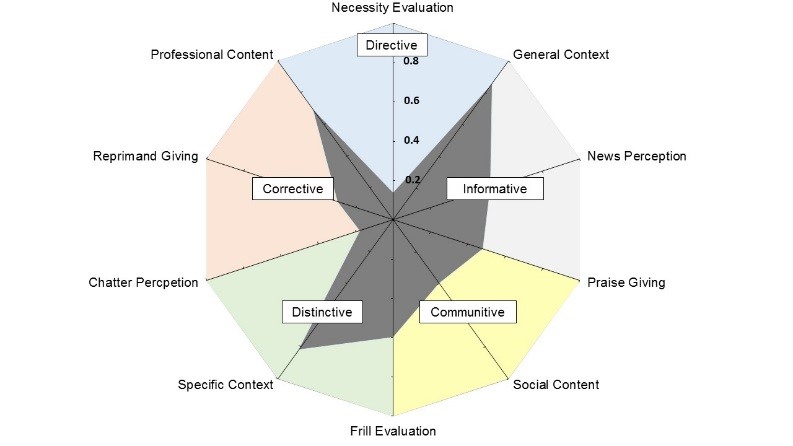Internal connections between organizational members are valuable assets for any organization. The ability to reach out to your colleagues, to know who knows what and even to engage over everyday topics such as last night’s television or weekend plans are, in many ways, what defines an organization. These discussions are the social fabric that bind the organization together. By examining this, we can learn a lot about how organizations work and thrive.
The ability to reach out to your colleagues, to know who knows what and even to engage over everyday topics are, in many ways, what defines an organization.
This was the topic of my PhD project, where I used data from Enterprise Social Media platforms in organizations to outline and describe these unique patterns of social interaction. The result was a social fabric framework, which enables organizations to use their Enterprise Social Media platform to show unique social dynamics.
Why is it valuable for us to understand the social fabric of an organization?
Consider the number of organizations you are involved in: Your place of employment, a local sports team, your family or even the old group of classmates or colleagues whom you meet once a year. All of these organizations come with their own set of values, which are central to how the organizational members interact. We tend to rely on verbal or non-verbal cues to distinguish these, and our proximity to the other members of the organization enables us to adapt our behavior and find our place in the organizational structure, whether formal or informal. As organizations grow and are more physically dispersed, understanding these dynamics becomes increasingly more complex. In a business setting, this is especially important as globalization causes changes in how we work and an increase in digital and remote collaboration.
To ensure that organizational ties remain and organizational members feel connected, it is important to establish and strengthen the social fabric of the organization. New social technologies play a central role in this. Many organizations are using some form of Enterprise Social Media as an internal platform to support collaboration and encourage everyday ‘watercooler’ chat among employees.
To ensure that organizational ties remain and organizational members feel connected, it is important to establish and strengthen the social fabric of the organization. #SoMe Click To TweetUsing Enterprise Social Media data to mirror the social fabric of the organization
Enterprise Social Media platforms act as informal communication channels to enable organizational members to connect with each other. Unlike conventional media such as email or phone, these platforms allow sharing of information from many-to-many, allowing every organizational member to post messages to the whole organization and everyone else to respond. Like better-known social media platforms such as Facebook or Twitter, Enterprise Social Media platforms build on a news feed where messages appear as they are posted and members can follow particular groups, people or topics. The interactions between organizational members on these type of platforms give unique insights into the nature of the relationships in the organization.
The social fabric framework outline these relationships using five patterns of relationships: directive, informative, community, distinctive and corrective. The framework is populated using data drawn from the organization’s Enterprise Social Media platform, categorizing each platform interaction, and turning it into a visualization.

The picture shows the social fabric of a Danish consultancy, using 386 interactions from the company’s Enterprise Social Media platform. The social fabric (the grey area) contains a lot of informative interactions, indicating that information and knowledge-sharing is central to how organizational members interact. There is also an emphasis on distinctive relationships, indicating that the members of the organization interact with specific individuals. Finally, we see traces of community and corrective relationships, showing that the organization encourages community-building but also enforces corrective behavior when necessary. This gives us a snapshot of the organization at a particular time, but it is possible to compare and contrast the development of the social fabric over time, in particular work groups or even across industries. By using Enterprise Social Media data, we can look closely at the underlying mechanisms of an organization’s social dynamics.
Want to know more? Contact me on twitter @signedyrby or connect with me on LinkedIn.
You can also check out my thesis: Read thesis

